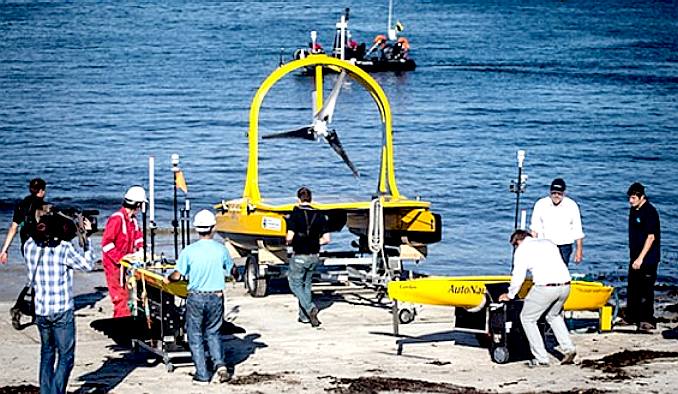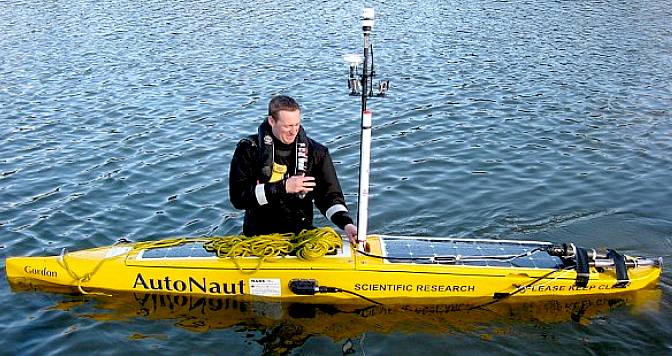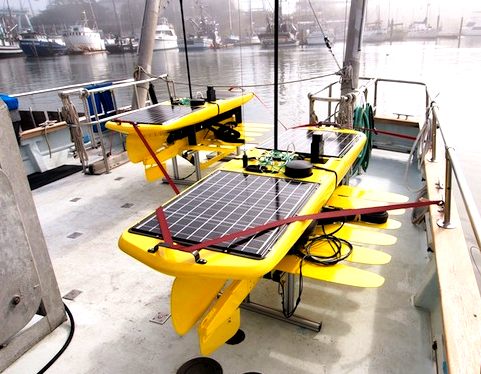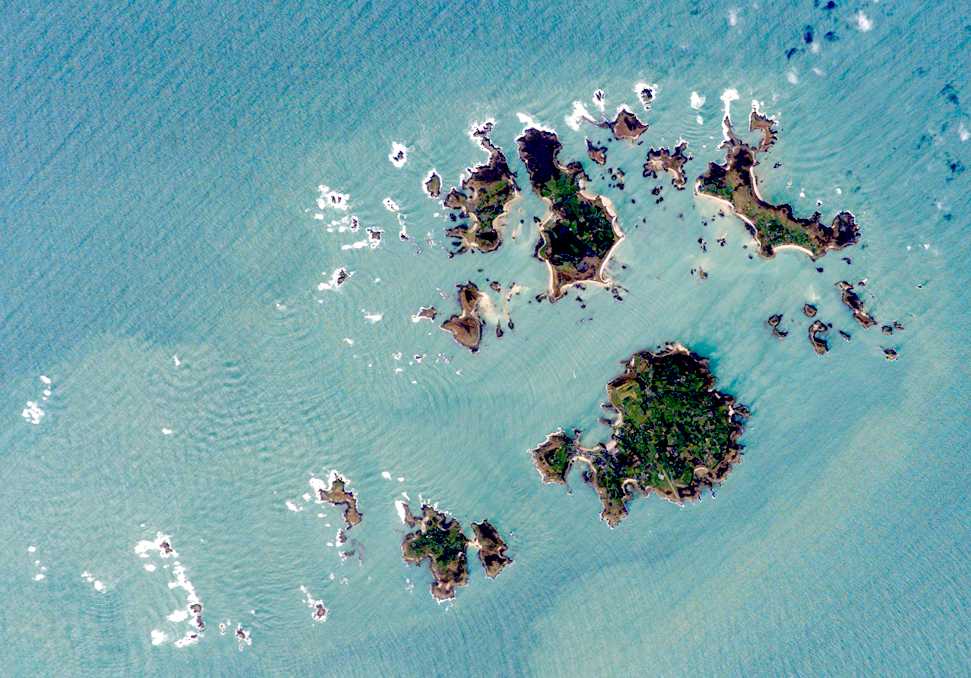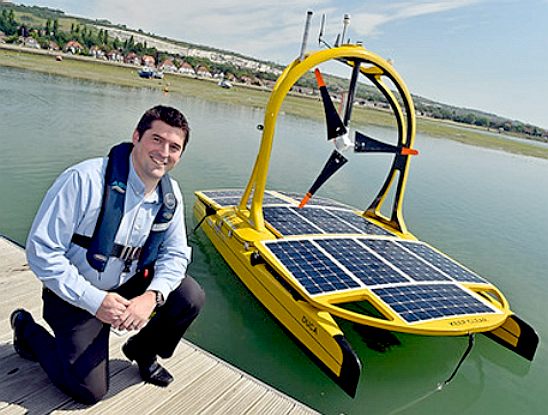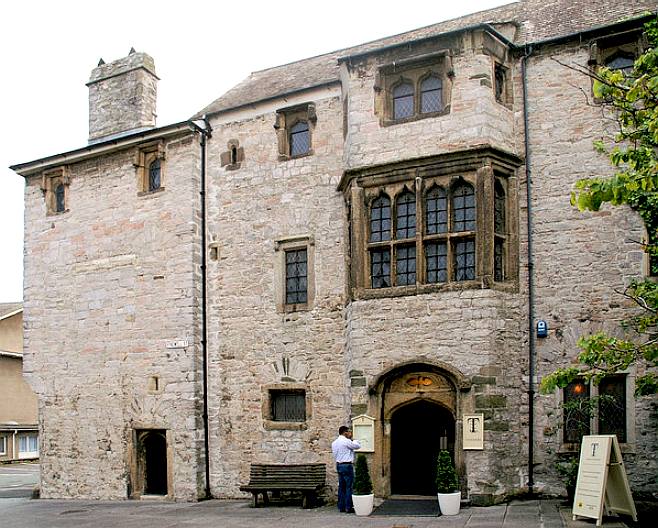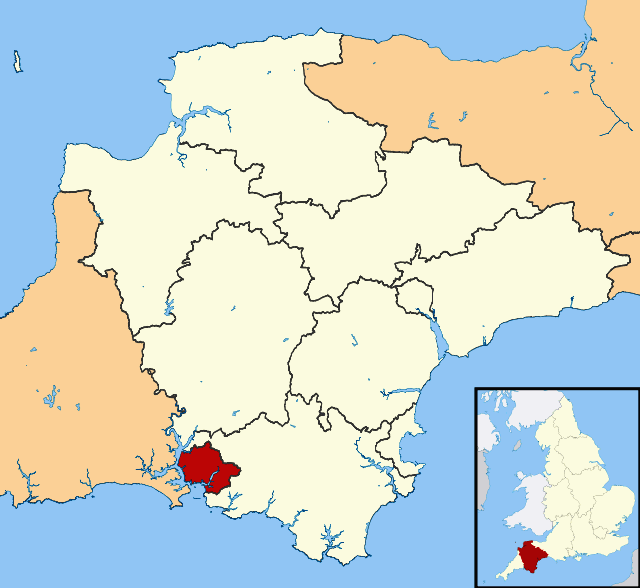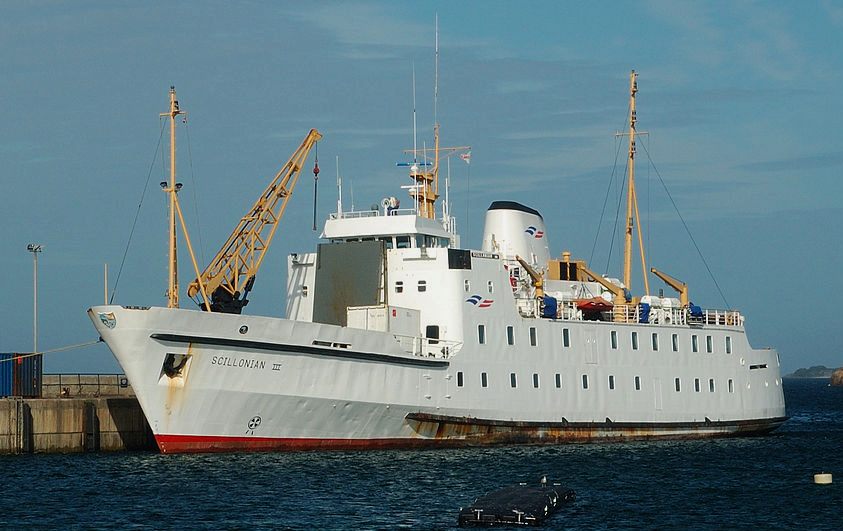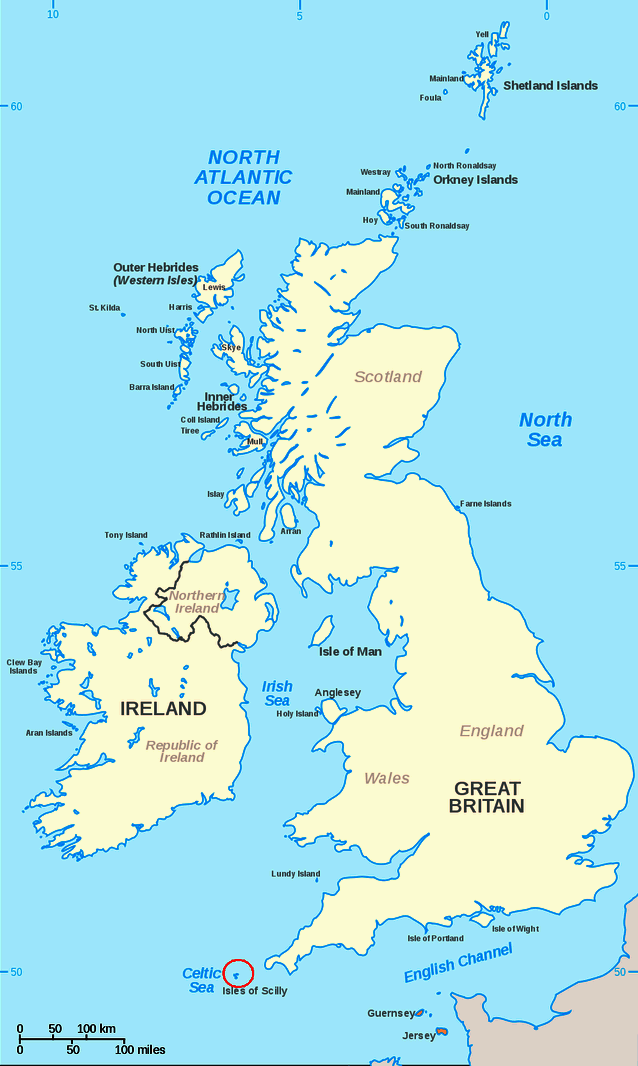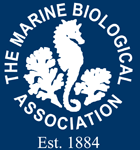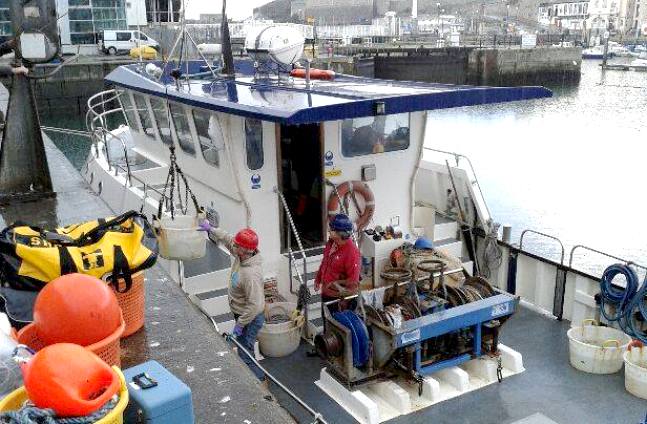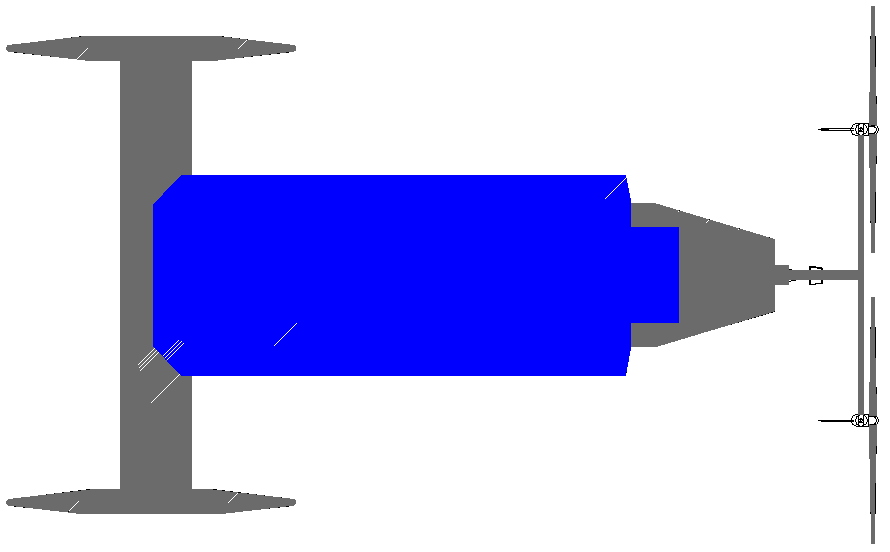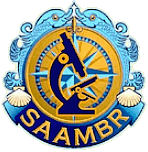|
MBA - FISH TRACKING SURVEY, PLYMOUTH, SCILLY ISLES
|
||||||||||||||||||||||||||||||||||||||||||||||||||||||
|
Seen in the centre of this picture, the C-Enduro is a wind generator and solar panel powered catamaran funded in May of 2014, along with the Autonaut (right), a wave propelled design. The two prototypes have been designed and built as part of a government-backed Small Business Research Initiative (SBRI) with the basic aim of developing ocean-going robotic vehicles capable of sustained marine research over long periods. Co-funding was provided by the Natural Environment Research Council (NERC), the Technology Strategy Board (TSB) and the Defence Science & Technology Laboratory (Dstl).
Designs for the vehicles were originally chosen by a panel of scientific and technical experts prior to development in association with the NOC’s Marine Autonomous & Robotic Systems (MARS) team. They have since successfully undergone rigorous capability trials in Portsmouth Harbour and off the coast of Oban in Scotland. The robots have been developed by Hampshire companies ASV and MOST (AV) in collaboration with the National Oceanography Centre at Southampton. The wave powered vessel on the left is a Waveglider from Liquid Robotics. The three autonomous vehicles – AutoNaut, C-Enduro and the SV3 Waveglider – are carrying a range of sensors to collect additional data on the physical properties of the ocean, such as water temperature and salinity.
DAILY MAIL - 6 NOVEMBER 2014
The ocean-going drone boats that will scour the seas for months tracking
delicious rare fish - and could lead to
fuel free ships. > Will help protected species and spread new light on breeding patterns
Ocean-going robots are being used in a pioneering science project off the coast of Britain.
Three innovative machines are tracking tagged fish and monitoring the sea.
The robo scouts can remain at sea for months using wind, solar and wave
power.
Scientists from the
MBA and technologists from the
National Oceanography
Centre, which has twin sites in Southampton and Liverpool, are involved. Plymouth Marine Laboratory is providing support.
The AutoNaut is a fine entry and ended monohull that is powered by solar and wave energy. The solar panels power the onboard electronics, the hull is propelled by wave motion using foils.
HOW IT WORKS -
Using acoustic 'pingers', plaice, sole, brill, and rays are being tracked at sea by the ocean robots programmed to patrol a large area of the MPAs are a number of seabed listening stations which work in concert with the ocean robots.
The AutoNaut is operated on behalf of the NOC by MOST (Autonomous Vessels) Ltd; C-Enduro was built and is operated on behalf of the NOC by ASV Ltd; and the NOC’s own SV3 Waveglider is being supported by its manufacturer (Liquid Robotics).
Liquid Robotics Waveglider is a solar and wave powered autonomous monohull that is simple and robust, save for the underwater fin assembly that might have been inspired by a Venetian blind or kite, as mush as a fish tail.
We will be most interested to learn of the energy generated by the Ampair wind turbine, where it is mounted so low. We'd like to contrast this with the loss of energy caused by shading of the solar decks. A far more logical solution is seen in the patent Bluefish ZCC design, where the turbines are mounted so as not to shade the solar wings, and may be moved higher to advantage a ship of the faster airstreams - and lowered in times of inclement weather, taking marine robotics to a new level.
SCILLY ISLES
The Isles of Scilly are an archipelago off the southwestern tip of the Cornish peninsula of
Great
Britain.
Satellite picture of the Scilly Isles taken by NASA
SCILLY
ISLES - GEOGRAPHY
Managing Director of ASV Global, Dan Hook, poses with his company's C-Enduro catamaran. What is interesting is that this is a fairly sizeable craft that appear not to be able to comply with COLREGs. What then will happen in a case involving collision or loss of human life? The operators of unmanned vehicles are responsible for accidents that they may cause or of any failure to comply with maritime regulations, such as SOLAS.
PLYMOUTH
Throughout the Industrial Revolution, Plymouth grew as a commercial shipping port, handling imports and passengers from the Americas, and exporting local minerals (tin, copper, lime, china clay and arsenic) while the neighbouring town of Devonport became a strategic
Royal Naval shipbuilding and dockyard town. In 1914 three neighbouring independent towns, viz., the county borough of Plymouth, the county borough of Devonport, and the urban district of East Stonehouse were merged to form a single County Borough. The combined town took the name of Plymouth which, in 1928, achieved city status. The city's naval importance later led to its targeting and partial destruction during
World War II, an act known as the Plymouth Blitz. After the war the city centre was completely rebuilt and subsequent expansion led to the incorporation of Plympton and Plymstock along with other outlying suburbs in 1967.
GEOGRAPHY
Plymouth lies between the River Plym to the east and the River Tamar to the west; both rivers flow into the natural harbour of Plymouth Sound. Since 1967, the unitary authority of Plymouth has included the, once independent, towns of Plympton and Plymstock which lie along the east of the River Plym. The River Tamar forms the county boundary between Devon and Cornwall and its estuary forms the Hamoaze on which is sited Devonport Dockyard.
MBA CONTACTS
The Marine Biological Association of the United Kingdom
Dan Hook rests on the C-Enduro hull. Note the stainless steel quick release catches that (presumably) allow the dismasting of the wind turbine and navigation electronic sensors.
PORTCHESTER
SEA TRIALS, JANUARY 2014 - The trials, which were attended by the National Oceanography Centre (NOC) and Royal Navy personnel, saw the C-Enduro operate autonomously and follow various courses set out by ASV’s control system. The highlight of the two day event came when the vehicle followed a course spelling out
‘ASV’. The C-Enduro brings a step change in oceanographic data collection, with an endurance of up to three months enabled by its environmentally friendly power structure the vehicle can support up to 500 watts of payload power. The applications for the vehicle are vast, ranging from marine environmental surveying to security and defence roles.
The robust vehicle design utilises state of the art technologies from the consortium and was designed to operate in coastal or open ocean weather conditions, currents and sea states.
Formed in 1998 ASV provides rugged, reliable and effective unmanned marine systems using cutting edge technology. ASV is based near Portsmouth in the United Kingdom. Contact: Sarah Dyer - Sales and Marketing Assistant sarah.dyer@asvglobal.com
The MBS's Sepia being loaded with equipment. A vessel like this will not fare well in the persistent data collection stakes, but is needed to catch and tag the fish that the robot trackers will be looking for. It remains to be seen how well such a system will work. Other uses for unmanned tracking is the hunt for foreign submarines in sovereign waters or other strategic choke points, as per the SeaNet™ and SeaWolf™ methods. See Patent specification.
A SEAVAX DRONE - This is a raw proposal for a robot ship that is designed to vacuum up plastic waste from the ocean based on the Bluefish ZCC concept. The vessel is solar and wind powered - and shares component with other variants. The front end (left) is modified so that there is a wide scoop area, into which plastic waste is funneled as the ship moves forward. The waste is pumped into a large holding bay after treatment, then stored until it can be off-loaded. The rear of the ship (right) carries two large wind turbines that generate electricity in combination with deck mounted solar panels (shown here in blue) to power the onboard processing machinery. The system can be semi-autonomous, such that in robot mode they alert HQ to any potential problems and share data as to progress for backers. A whole cleanup mission can be controlled from land, with visuals and data streams. A SeaVax would operate using a search program called SeaNet, that would need to be modified for this specific function.
LINKS & REFERENCE
Wikipedia Marine_Biological_Association_of_the_United_Kingdom Maritime Journal UK funded-ocean robot development maritime journal autonomous asv robots set sail on uk survey Marine Link MBA Marine Biological Association fish tracking mission Wikipedia Scottish_Association_for_Marine_Science Marine Biological Association of India Seaworld South African Association Marine Resarch BSHS travel guide marine biological association plymouth Daily Mail The-ocean-going-drone-boat-scour-seas-months-tracking-rare-fish-lead-fuel-free-ships NOC projects exploring-ocean-fronts c-enduro Maritime Industries ASV LEMUSV long endurance marine unmanned surface vehicle http://en.wikipedia.org/wiki/Plymouth http://en.wikipedia.org/wiki/Isles_of_Scilly http://www.maritimeindustries.org/Member-News/long-endurance-marine-unmanned-surface-vehicle-lemusv http://www.sams.ac.uk/ http://www.bshs.org.uk/travel-guide/marine-biological-association-plymouth-england http://www.seaworld.org.za/saambr http://www.mbai.org.in/ http://en.wikipedia.org/wiki/Scottish_Association_for_Marine_Science http://en.wikipedia.org/wiki/Marine_Biological_Association_of_the_United_Kingdom http://www.marinelink.com/news/vehicles-tracking-mission380200.aspx http://noc.ac.uk/research-at-sea/nmfss/mars http://www.nerc.ac.uk/press/releases/2014/26-oceanrobots/ http://www.nerc.ac.uk/ http://www.pml.ac.uk/ http://www.ukmarinealliance.com/ http://projects.noc.ac.uk/exploring-ocean-fronts/c-enduro http://noc.ac.uk/ https://sbri.innovateuk.org/ http://www.southampton.ac.uk/ http://www.autonautusv.com/ http://www.maritimejournal.com/news101/marine-civils/hydrographic-survey/uk-funded-ocean-robot-development http://www.asvglobal.com/
Blueplanet Universal is looking to turn the Kulo Luna story into a script for a major film release, along the lines of Free Willy, Saving Luna, Big Miracle and Dolphin Tale.
ACIDIFICATION - ADRIATIC - ARCTIC - ATLANTIC - BALTIC - BAY BENGAL - BERING - CARIBBEAN - CORAL - EAST CHINA ENGLISH CH - GOC - GULF GUINEA - GULF MEXICO - INDIAN - IOC - IRC - MEDITERRANEAN - NORTH SEA - PACIFIC - PERSIAN GULF - SEA JAPAN STH
CHINA - PLASTIC
- PLANKTON - PLASTIC
OCEANS - SEA
LEVEL RISE - UNCLOS
- UNEP
WOC
- WWF AMAZON - BURIGANGA - CITARUM - CONGO - CUYAHOGA - GANGES - IRTYSH - JORDAN - LENA - MANTANZA-RIACHUELO MARILAO
- MEKONG - MISSISSIPPI - NIGER - NILE - PARANA - PASIG - SARNO - THAMES
- YANGTZE - YAMUNA - YELLOW
|
||||||||||||||||||||||||||||||||||||||||||||||||||||||
|
This
website is Copyright © 2015 Bluebird Marine Systems Ltd. The
names Bluebird,
Bluefish™,
Miss Ocean™, SeaNet™,
SeaVax™
and the blue bird in flight
|
